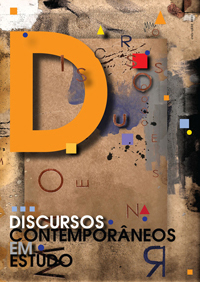Percursos e avanços do texto multimodal: novas perspectivas na contemporaneidade
DOI:
https://doi.org/10.26512/discursos.v1i1.0/8049Keywords:
Discourse Analysis. Multimodality.Abstract
Under the new contemporary perspectives to the text, the communication has always been multimodal. This assumption makes it possible to determine the pathways of the phenomenon of social practices of multimodality in the present context. In the light of the precepts of Social Semiotics ─ defending that the participants in a more powerful position lead other participants to a greater degree of interpretation ─, with focus on various semiosis involved in the production of meaning as a legitimate means of analytical method , it was observed that regardless of the type of discourse to be studied, it is necessary to consider it in the social and cultural context in order to be a speech a mode of action capable to change the world and the individuals who participate in it. In this sense, the texts reviewed here reveal the ideological aspects of construction and the interest of producers of multimodal texts guided by social needs. Accordingly, we conclude that we must turn to research multimodal texts, deconstructing the alienating action of image and building a critical evaluation of what we see. Learning to deal with overload of information of the world of modern societies is a powerfull resource for research and knowledge building, revealing the phenomena of language and equipping for a multimodal world, filled with images and sounds in order to learn to deal critically with nature of this type of discourse.
Downloads
Downloads
How to Cite
Issue
Section
License
Autores que publicam nesta revista concordam com os seguintes termos:
a) Os(as) autores(as) mantêm os direitos autorais e concedem à revista o direito de primeira publicação, sendo o trabalho simultaneamente licenciado sob a Creative Commons Attribution License o que permite o compartilhamento do trabalho com reconhecimento da autoria do trabalho e publicação inicial nesta revista.
b) Os(as) autores(as) têm autorização para assumir contratos adicionais separadamente, para distribuição não-exclusiva da versão do trabalho publicada nesta revista (ex.: publicar em repositório institucional ou como capítulo de livro), com reconhecimento de autoria e publicação inicial nesta revista.
c) Autores têm permissão e são estimulados a publicar e distribuir seu trabalho on-line (ex.: em repositórios institucionais ou na sua página pessoal) após o processo editorial, já que isso pode gerar alterações produtivas, bem como aumentar o impacto e a citação do trabalho publicado (Veja O Efeito do Acesso Livre).
d) Os(as) autores(as) dos trabalhos aprovados autorizam a revista a, após a publicação, ceder seu conteúdo para reprodução em indexadores de conteúdo, bibliotecas virtuais e similares.
e) Os(as) autores(as) assumem que os textos submetidos à publicação são de sua criação original, responsabilizando-se inteiramente por seu conteúdo em caso de eventual impugnação por parte de terceiros.




